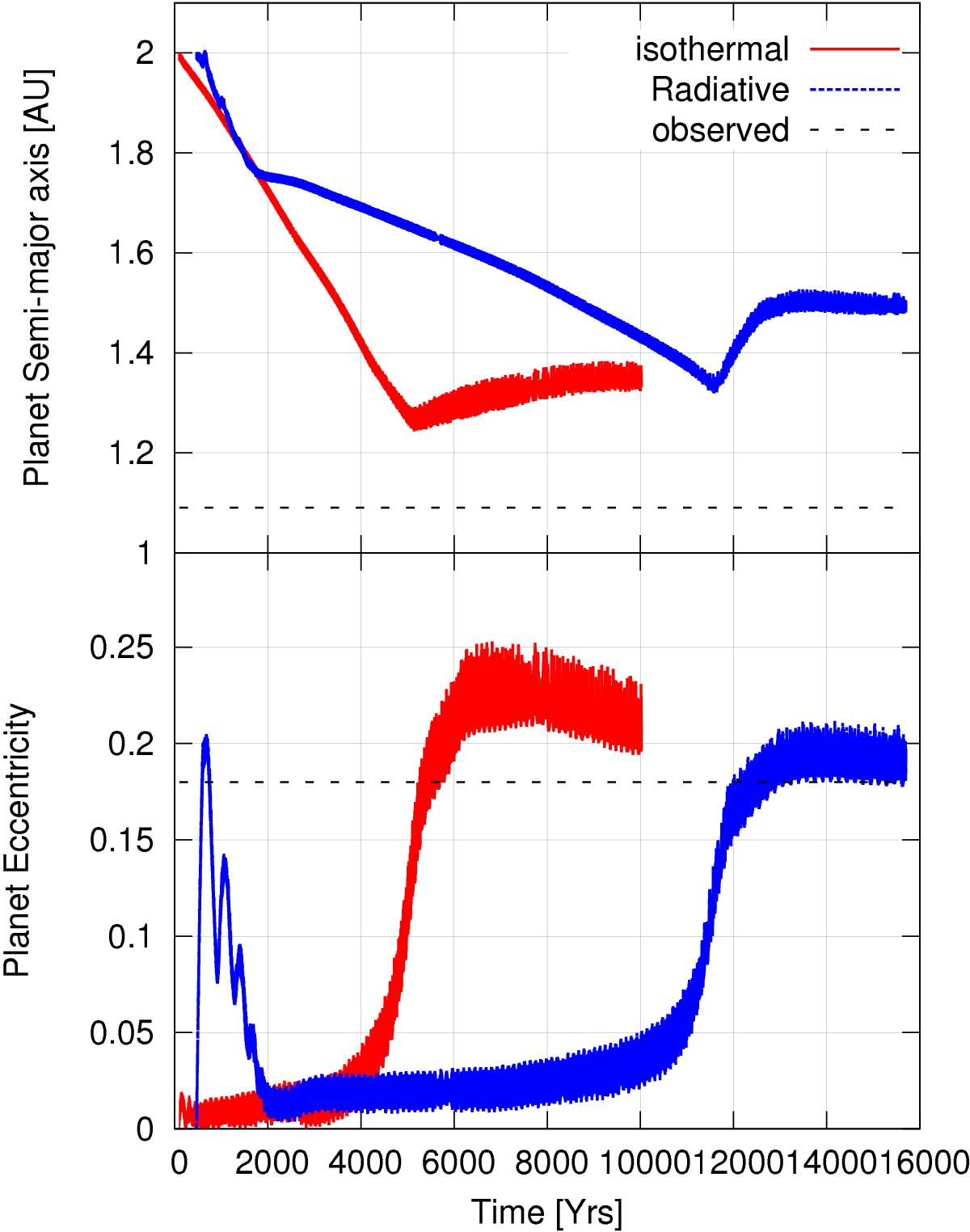Fig. 8

Evolution of the semi-major axis (top) and eccentricity (bottom) of an embedded planet in disks with lower surface densities (1/4 of the reference model) and reduced viscosities (α = 0.004). The red graph corresponds to the isothermal model and the blue refers to the radiative disk. In the two simulations, the planet is started in a circular orbit at a distance of a0 = 2.0 au from the center of mass of the binary. In the simulation shown in red, the planet is included in the disk from the very beginning of the simulation, and it begins to migrate simultaneously with the disk evolution starting from its initial density profile. In the simulation shown in blue, the disk is first relaxed to the radiative equilibrium, and then the planet is embedded in it. The dashed horizontal lines refer to the observed parameter of the Kepler-34 planet.
Current usage metrics show cumulative count of Article Views (full-text article views including HTML views, PDF and ePub downloads, according to the available data) and Abstracts Views on Vision4Press platform.
Data correspond to usage on the plateform after 2015. The current usage metrics is available 48-96 hours after online publication and is updated daily on week days.
Initial download of the metrics may take a while.


